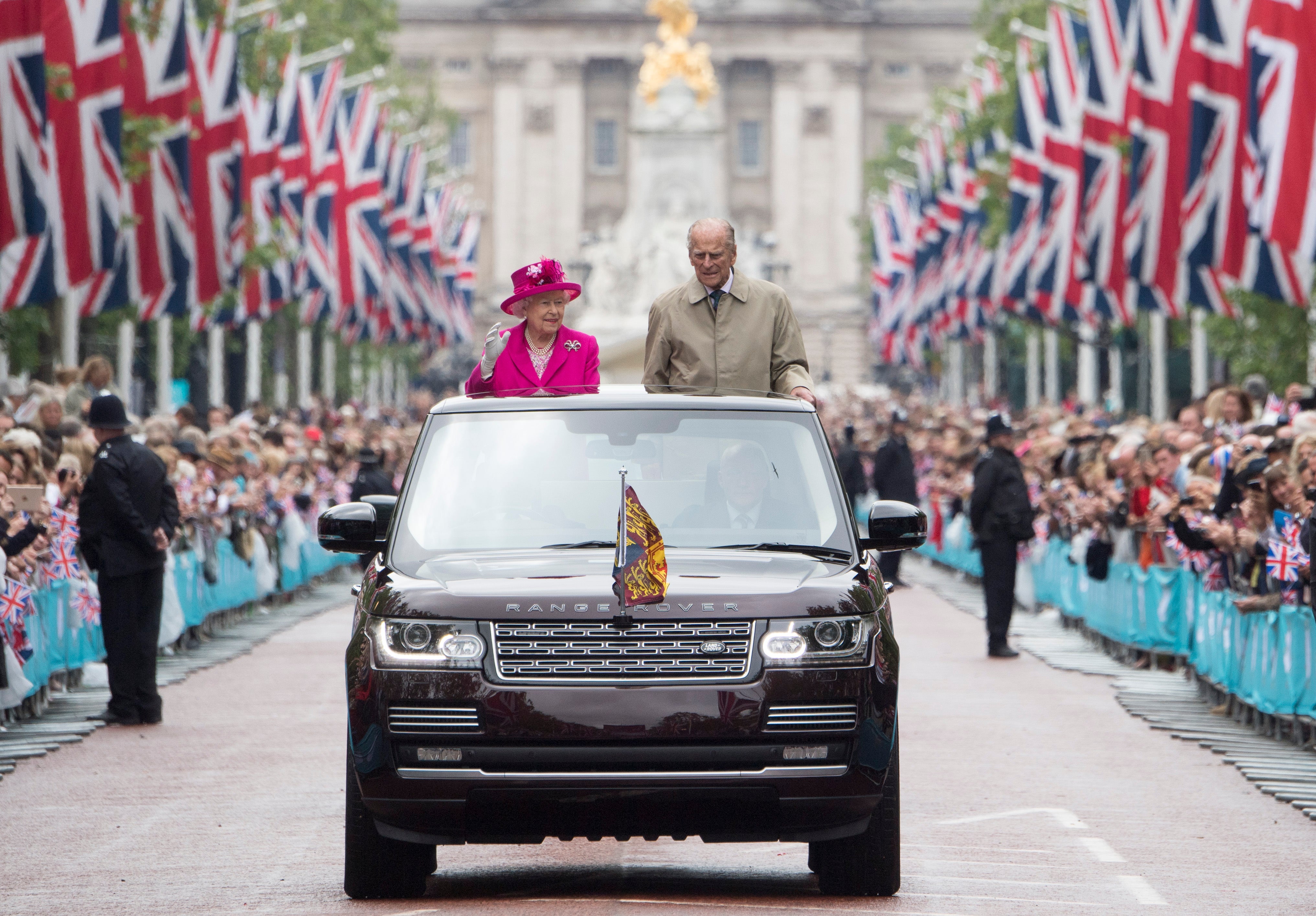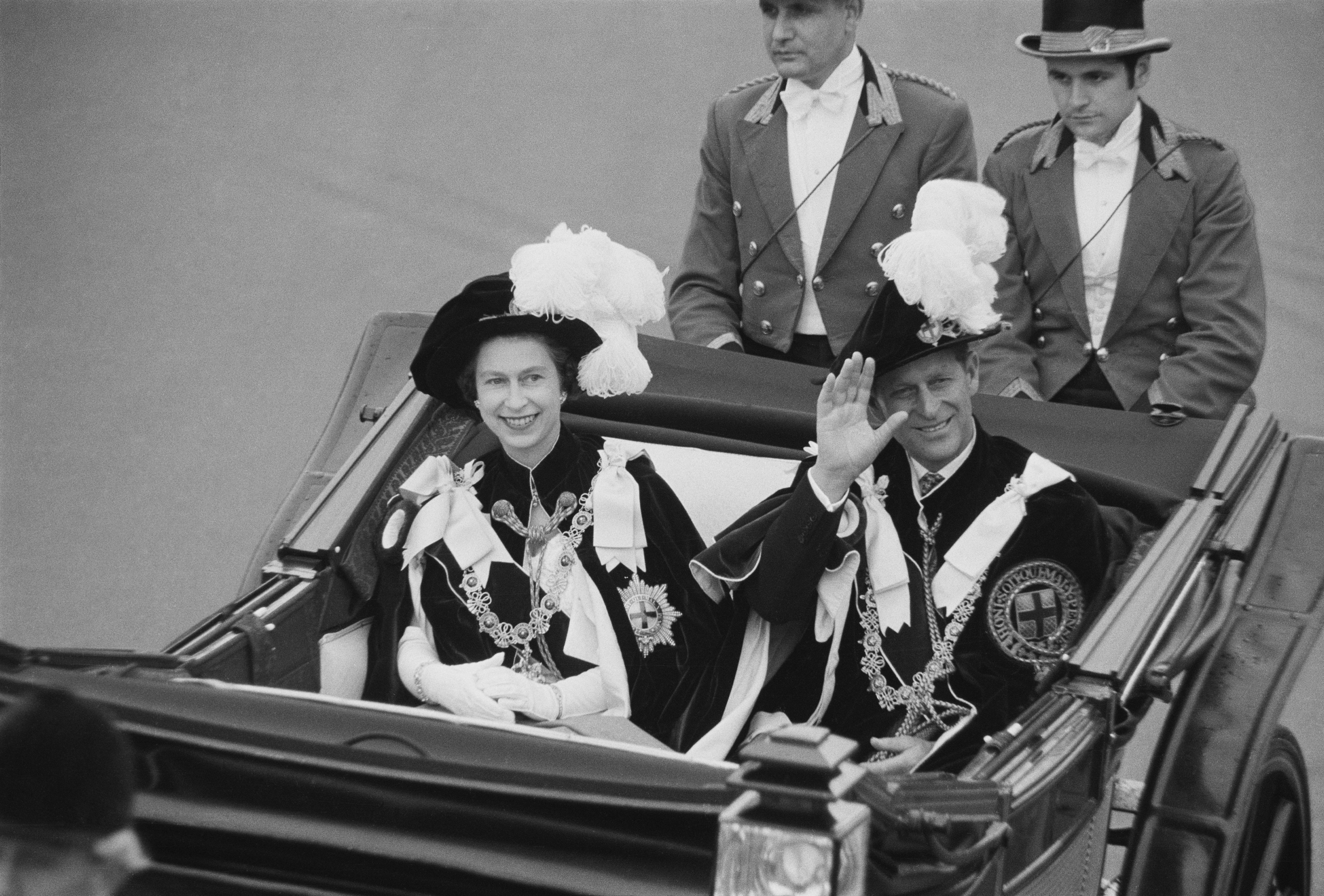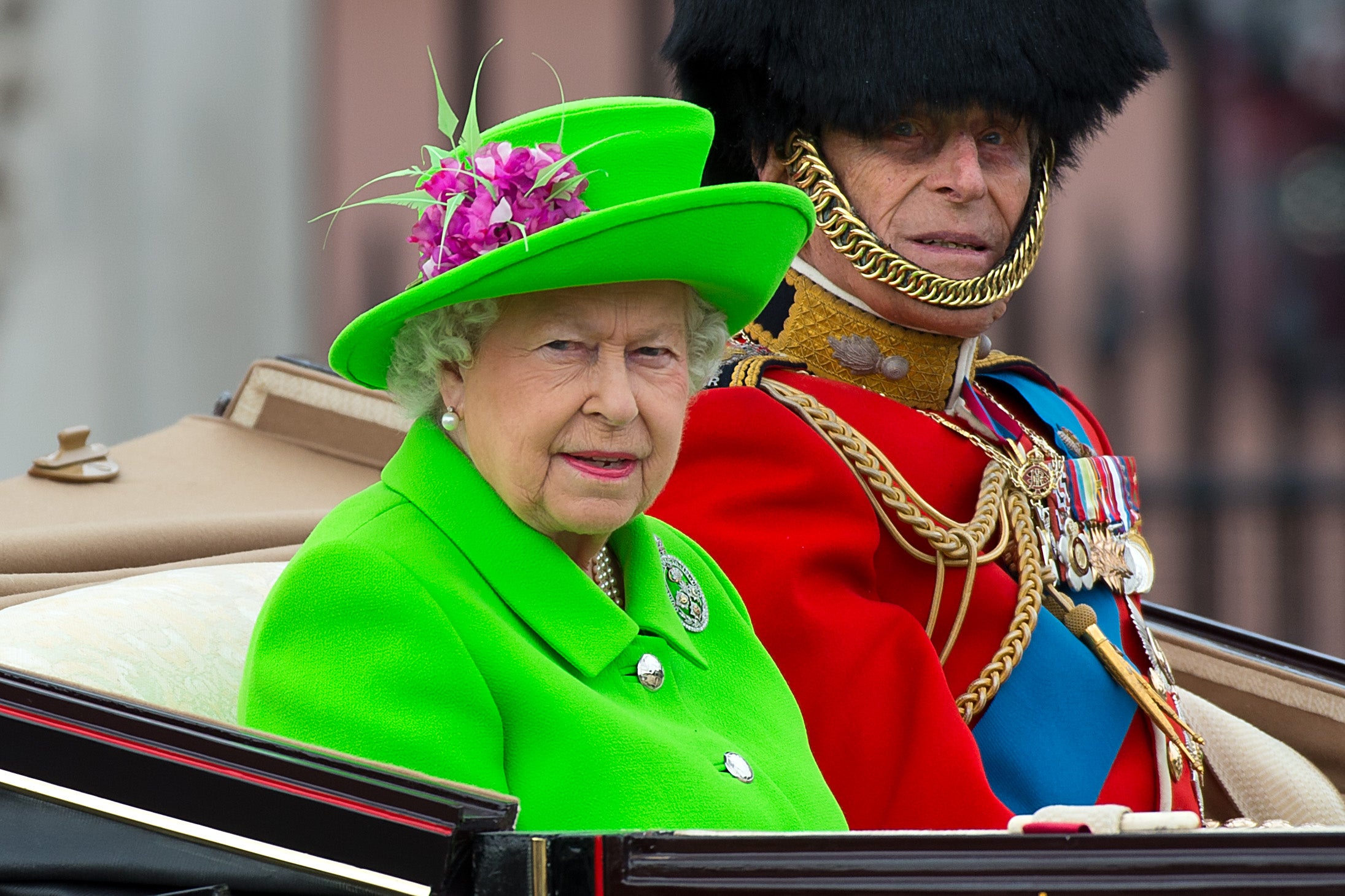Prince Philip: 10 surprising and lesser-known facts about the Duke of Edinburgh
From being born on a dining table to authoring several books
Your support helps us to tell the story
From reproductive rights to climate change to Big Tech, The Independent is on the ground when the story is developing. Whether it's investigating the financials of Elon Musk's pro-Trump PAC or producing our latest documentary, 'The A Word', which shines a light on the American women fighting for reproductive rights, we know how important it is to parse out the facts from the messaging.
At such a critical moment in US history, we need reporters on the ground. Your donation allows us to keep sending journalists to speak to both sides of the story.
The Independent is trusted by Americans across the entire political spectrum. And unlike many other quality news outlets, we choose not to lock Americans out of our reporting and analysis with paywalls. We believe quality journalism should be available to everyone, paid for by those who can afford it.
Your support makes all the difference.Following the death of HRH Prince Philip, Duke of Edinburgh, who died at the age of 99 on 9 April, the country has entered into a period of national mourning.
As well as being the longest-serving consort in British history, married to Queen Elizabeth II for 73 years, Prince Philip was known for his distinguished career with the British Armed Forces, including the Royal Navy and the Royal Air Force; for being patron to more than 900 charitable organisations; for his passionate enjoyment of a range of sports from cricket to Polo and the lesser-known competitive carriage driving; as well as for his forward-thinking environmental work.
Aside from his role within the royal family, the Duke had a rich and varied personal history of his own that included a turbulent childhood, tense familial relationships and myriad esoteric extra-curricular interests.
Speaking to the BBC in the documentary about his late father’s life, A Tribute to HRH Duke of Edinburgh, Prince Charles said, “I think he’d probably want to be remembered as an individual in his own right, really.”
From his Greek and Danish origins to his passion for bird-watching and prolific writing career, here are nine surprising and lesser-known facts about the late Prince Philip.
1. He was Prince of Greece and Denmark
He was the only son of Prince Andrew of Greece, the younger brother of King Constantine I of Greece, and Princess Alice of Battenberg. His father’s family was of Danish descent, as Prince Andrew was the grandson of King Christian IX of Denmark.
He was brother to his four older sisters, Princess Margarita, Princess Theodra, Princess Cecilie and Princess Sophie.
He was named Prince Philip of Greece and Denmark.
2. He was born on a dining table and fled Greece in an orange box
Prince Philip was born Philippos Andreou Schleswig-Holstein-Sonderburg-Glücksburg on 10 June 1921 on the Greek island of Corfu and his mother actually gave birth to him on the kitchen table.
During the 1920s, Greece was in a state of political instability and in 1922, the King of Greece, Constantine I was forced to abdicate the throne.
Philip’s father, Prince Andrew, was imprisoned and sentenced to death, only able to escape this fate on the condition that he left the country and never returned.
The entire family was forced into exile and King George V of England sent a Royal Navy ship to evacuate the family from Corfu and bring them to safety.
It was December 1922 and the then 18-month-old infant Philip travelled on board in a makeshift cot made out of an orange box.
In A Tribute to HRH Duke of Edinburgh, royal author and broadcaster, Gyles Brandreth said: “They escaped with literally nothing – or next to nothing – their clothes, a few belongings, but literally no money.”
As a result of his nomadic past, Brandreth recounted that Philip had once told him he thought the British public probably considered him to be a “refugee husband”. For many years, he used to mark himself down in visitor books as having “no fixed abode”.
Prince Charles said of his father: “It can’t have been easy, and life was uncertain, and they probably had to rely on other people to help and so on. And I think he presumably had to fall back on himself quite a lot.”
Read more:
- Prince Philip dead - Latest as gun salutes planned for Prince Philip across UK
- 90 of Prince Philip’s most excruciating comments
- Charles gets a new title after death of father Prince Philip
- Who was Prince Philip’s mother, Princess Alice?
- Prince Philip was a dinosaur, but the Royals will struggle without him | Tom Peck
3. His sister died, while pregnant, in a plane crash
On 16 November 1937, Philip’s Sister Cecilie, then eight-months-pregnant, was flying from Brussels to London for a wedding, along with her husband and their two children, when their plane crashed through a factory roof in Belgium. There were no survivors. Cecilie was just 26.
Philip was said to be completely devastated by the news, reportedly saying he thought he would “never get over the terrible blow”.
4. His mother was a nun
Philip’s mother, Princess Alice of Battenberg, was the eldest child of Prince Louis of Battenberg and Princess Victoria of Hesse and by Rhine and the sister of Earl Mountbatten of Burma.
She was actually born in Windsor Castle in 1885 and was raised as an English princess, before marrying Prince Andrew of Greece and Denmark in 1903 and becoming Princess Andrew of Greece and Denmark.
She dedicated her life to charity work, from helping Greek refugees to working with the Red Cross during the Second World War and even risking her life by hiding a Jewish family in her home following the Nazi invasion of Greece.
She had converted to the Greek Orthodox Church in 1928 and went on to establish a nursing order of Greek Orthodox nuns.
When she attended the wedding of Princess Elizabeth and Prince Philip in 1947, Princess Alice wore a long nun’s habit that she had designed herself.
As depicted in Netflix’s The Crown, Princess Alice moved into Buckingham Palace at the end of her life and lived there until her death in 1969.
In 1994, her charitable efforts were recognised when she was named as Righteous Among the Nations for her actions during the Holocaust and in 2010, she was labelled a Hero of the Holocaust by the British government.

5. He had many hobbies, from bird-watching to oil painting
Among the Duke of Edinburgh’s many hobbies, were twitching, painting, sports and flying.
According to the official royal website, Prince Philip first became interested in birdwatching in 1956 while on a trip aboard the HM Yacht Britannia. There he photographed the various birds he spotted out at sea.
The Duke continued his ornithological photography and made notes about the breeds he had spotted during his numerous tours and in 1987 he became President of the British Trust for Ornithology.
The Duke of Edinburgh collated drawings and paintings of birds by artists including Axel Amuchastegui, Robert Bateman, Terrence Bond and Keith Brockie.
As well as being a passionate art collector, Philip enjoyed painting as a hobby in its own right – particularly using oils.
6. He was related to the Queen
Prince Philip and Queen Elizabeth II were both the great, great grandchildren of Queen Victoria – making them third cousins.
For Queen Elizabeth, the relation to Queen Victoria is through her father’s side. Queen Victoria had nine children, four of whom were sons and five, daughters, with her husband Prince Albert.
When Queen Victoria died in 1901, her eldest son, Prince Edward, ascended to the throne, followed by his brother, George, in 1910. King George V reigned until his death in 1936 when his son, George VI became king.
King George V’s reign lasted until his death in 1936 when his eldest son when his eldest son Edward ascended the throne for a reign that was cut short by his abdication, leading his brother, George VI – Queen Elizabeth II’s father – to become king.
Prince Philip was related to Queen Victoria through his mother’s side.
Queen Victoria’s second daughter, Princess Alice, who was born in 1843, married Ludwig IV, the Grand Duke of Hesse. The pair had seven children together, including their daughter Victoria, who married Prince Louis of Battenburg in 1884. The pair’s first child, Princess Alice of Battenburg, born in 1885, was Prince Philip’s mother.

7. He first met the Queen when the pair were teenagers
After finishing school, Philip joined Dartmouth’s Britannia Royal Naval College, where Queen Elizabeth’s father, King George VI had also been a naval cadet.
In the summer of 1939, Princesses Elizabeth and Margaret accompanied their parents on a trip to the college. It was then that the 13-year-old Elizabeth met Philip, five years her senior. According to Tatler, the princesses’ governess, Marion Crawford said that Philip came aboard the King’s yacht for meals, writing in her memoir, The Little Princess, that Elizabeth was attracted to Philip’s “Viking” good looks. It is said that Lord Louis Mountbatten played no part in the matchmaking of the future monarch with her husband of 73 years.
When war broke out weeks later, Elizabeth reportedly kept a photograph of Philip in his uniform at her bedside.
In 1946 Philip was an usher for the wedding of his cousin, countess Mountbatten. Princess Elizabeth was in attendance and images of the pair together led to media rumours around a possible budding romance.
Their engagement was announced in July 1947 and the pair were married in Westminster Abbey on 20 November that same year.
According to the official royal website, in 2017 The Queen and the Duke of Edinburgh became the first couple in the Royal Family to celebrate their Platinum wedding anniversary.
This year would have been their 74th wedding anniversary.

8. He anglicised his name
Prince Philip was baptised as Philippos Andreou Schleswig-Holstein-Sonderburg-Glücksburg.
But in order to marry Princess Elizabeth, he renounced his Greek and Danish title in 1947 to become a naturalised British subject. He also used the anglicised version of his mother’s surname – Battenberg – to become Mountbatten.
Prince Louis, Philip’s grandfather, had first changed the family name to Mountbatten during the First World War.
9. His sisters married German princes
The Duke of Edinburgh had four elder sisters: Princess Margarita (1905 – 1981), Princess Theodora (1906 –1969), Princess Cecile (1911 – 1937) and Princess Sophie (1914 – 2001).
Philip’s four sisters all married German Princes, with Cecile actively supporting the Nazi regime. Cecile died in a plane crash at the age of 26 and her funeral was held in Darmstadt, Germany. Sixteen-year-old Philip marched behind her coffin, alongside Princess Sophie’s spouse, Prince Christophe, a member of Nazi party. The crowd gave “Heil Hitler” salutes.
Princess Sophie, reportedly wrote in her memoir that she had found Adolf Hitler to be a “charming and seemingly modest man” and named one of her five children Karl Adolf, apparently in his honour.
As a result of these unfortunate connections, Philip’s three surviving sisters were not invited to his wedding to Princess Elizabeth.
10. He was a prolific author
Alongside his charitable patronages, service in the armed forces and work for the Commonwealth, the Duke of Edinburgh was a prolific writer, authoring as many as 14 books during his lifetime.
The titles included a 1994 book, Competition Carriage Driving, about the idiosyncratic sport he enjoyed; Men, Machines and Sacred Cows, a collection of his own essays and lectures that spanned design, science and technology; and Birds from Britannia (1962)

Join our commenting forum
Join thought-provoking conversations, follow other Independent readers and see their replies
Comments